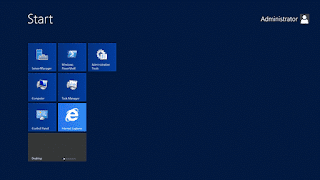Windows Server Interview Questions - Part 1
Part 1
1 - Explain what is Windows Server?
Window server is a series of server operating system developed by Microsoft Corporation.
2 - Explain in windows DNS server what is Primary, Secondary and Stub zone?
In windows DNS server,
Primary Zone: In this, the file is saved as normal text file with filename (.dns).
Secondary Zone: It maintains a read-only copy of zone database on another DNS server. Also, it acts as a back-up server to the primary server by providing fault tolerance and load balancing
Stub Zone: It consists of a copy of name server and SOA records which is used for reducing the DNS search orders.
3 - Explain what does IntelliMirror do?
IntelliMirror helps to reconcile desktop settings, applications and stored files for users especially for those users who move between workstations or those who works offline
4 - Mention how many types of queries DNS does?
The types of queries DNS does are
Iterative Query
Recursive Query
5 - Explain what is the primary function of the domain controller?
Primary function of the domain controller is to validate users to the networks, it also provide a catalog of Active Directory Objects.
6 - Explain what is LDAP?
To look up for the information from the server, e-mail and another program follows or uses the internet protocol. This protocol is referred as LDAP or Lightweight Directory Access Protocol.
It is a set of files and folders that is stored on the local hard disk of each domain controller in a domain and are replicated by the FRS ( File Replication Service). These files contain group or user policy information.
8 - Explain what is INODE?
INODE holds the metadata of files; INODE is a pointer to a block on the disk, and it is unique.
In simple words, it is a unique number allocated to a file in UNIX-like OS.
9 - Explain what is RAID in Windows Server?
For storing same data at a different place RAID or Redundant Array of Independent Disks strategy is used. It is a strategy for building fault tolerance and increase the storage capacity. On separate drives it allows you to combine one or more volumes so that they are accessed by a single drive letter
10 - Explain what is the purpose of deploying local DNS servers?
A local DNS server provides the local mapping of fully qualified domain names to IP addresses. To resolve remote requests related to the domains names on your network, local DNS servers can provide record information to remote DNS servers.
11 - Mention what windows server 2008 service is used to install client operating system over the network?
WDE ( Windows Deployment Services ) allows you to install client and server operating systems over the network to any computer with a PXE enabled network interface
12 - Explain what is the major difference between NTFS ( New Technology File System) or FAT (File Allocation Table) on a local server?
For local users FAT (File Allocation Table) and FAT32 provides security, while NTFS ( New Technology File System) provides security for domain users as well as local users. NTFS provides file level security which is not possible through FAT32.
13 - Explain where is the AD database is held?
AD database is saved in %systemroot%/ntds. Files that controls the AD structure are
ntds.dit
edb.log
res1.log
res2.log
edn.chk
14 - Explain if it is possible to connect Active Directory to other 3rd party Directory services?
Yes, you can connect other vendors directory services with Microsoft version. By using dirXML or LDAP to connect to other directories.
15 - What does it mean by “tattooing” the Registry ?
“ Tattooing” the registry means user can modify and view user preference that are not stored in the maintained portions of the Registry. Even if the group policy is changed or removed, the user preference will still persist in the registry.
16 - In the case when MSI file is not available, how you can install an app?
To add the application using the Software Installer.ZAP text file can be used rather than the windows installer
Credits : career.guru99 and Youtube

Comments
Post a Comment